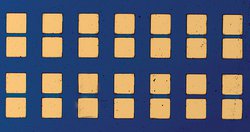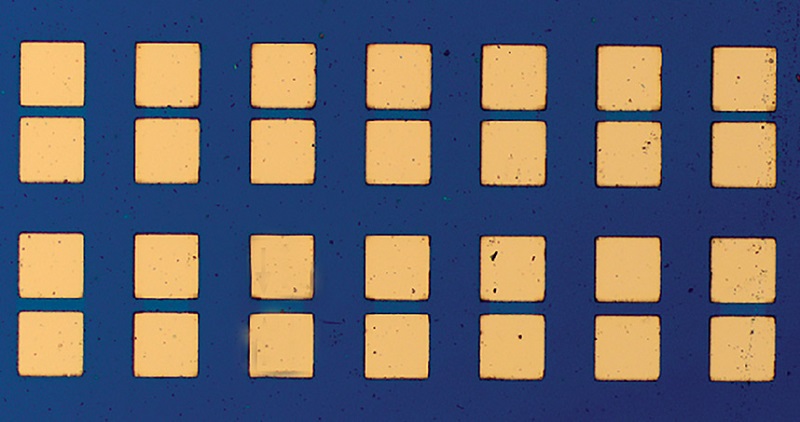
March 12, 2018
By: Michael Feldman
A research team at Northwestern University has developed a “memtransitor,” a device that could be the basis for advanced neuromorphic computers.
The new devices work something like biological neurons, which combines both memory and processing functions in a single structure. Memtransistors are able to do this by incorporating the characteristics of memristors and transistors, while also supporting multiple terminals. The latter characteristic is analogous to a neuron's ability to talk to other neurons via synaptic connections.

Fabricated molybdenum disulfide memtransistors. Source: Northwestern University McCormick School of Engineering
“Computers have separate processing and memory storage units, whereas the brain uses neurons to perform both functions,” said Northwestern Engineering’s Mark Hersam, who led the research team. “Neural networks can achieve complicated computation with significantly lower energy consumption compared to a digital computer.”
The memtransistors are built from molybdenum disulfide (MoS2), which are laid down in two-dimensional sheets and form “grains” – ordered domains within the sheets that allow for electrical resistance to be controlled. “Because molybdenum disulfide is atomically thin, it is easily influenced by applied electric fields,” Hersam explained. “This property allows us to make a transistor. The memristor characteristics come from the fact that the defects in the material are relatively mobile, especially in the presence of grain boundaries.”
According to the memtransistor press announcement, the development of these devices began in 2015, when Hersam and his fellow researchers created three-terminal memristors, which was itself an improvement on the two-terminal design of conventional memristors. The presence of the extra terminal “paved the way for memristors to be used in more complex electronic circuits and systems, such as neuromorphic computing.”
In the latest design, the Northwestern researchers were able to lay down the MoS2 in a continuous film, enabling the creation of many device across the wafer. They then added additional electrical contacts, producing a seven-terminal device, wherein one terminal controls the electrical current for the other six terminals.
Hersam points out the power of the multiple connections, likening it to the multiple synapses in neurons. Of course. neurons can have thousands of these kinds of connections, so the analogy is only approximate, but the presence of multiple connections offers the prospect of creating neural-like networks.
“We believe that the memtransistor can be a foundational circuit element for new forms of neuromorphic computing,” said Hersam. “However, making dozens of devices, as we have done in our paper, is different than making a billion, which is done with conventional transistor technology today. Thus far, we do not see any fundamental barriers that will prevent further scale up of our approach.”
